Redefining play experiences with ASTM/ADA-certified structures that blend accessibility with innovation. Our equipment creates barrier-free environments where children of all abilities develop physical, social, and cognitive skills through sensory-rich activities – from tactile panels to wheelchair accessible ramps. Every design meets IPEMA safety standards, ensuring secure play while nurturing inclusive play in the early years.
√ Standalone Playground Equipment
√ Equipment for All Ages
√ Budget-Friendly Options
√ Indoor & Commercial Solutions
√ Customizable for Schools
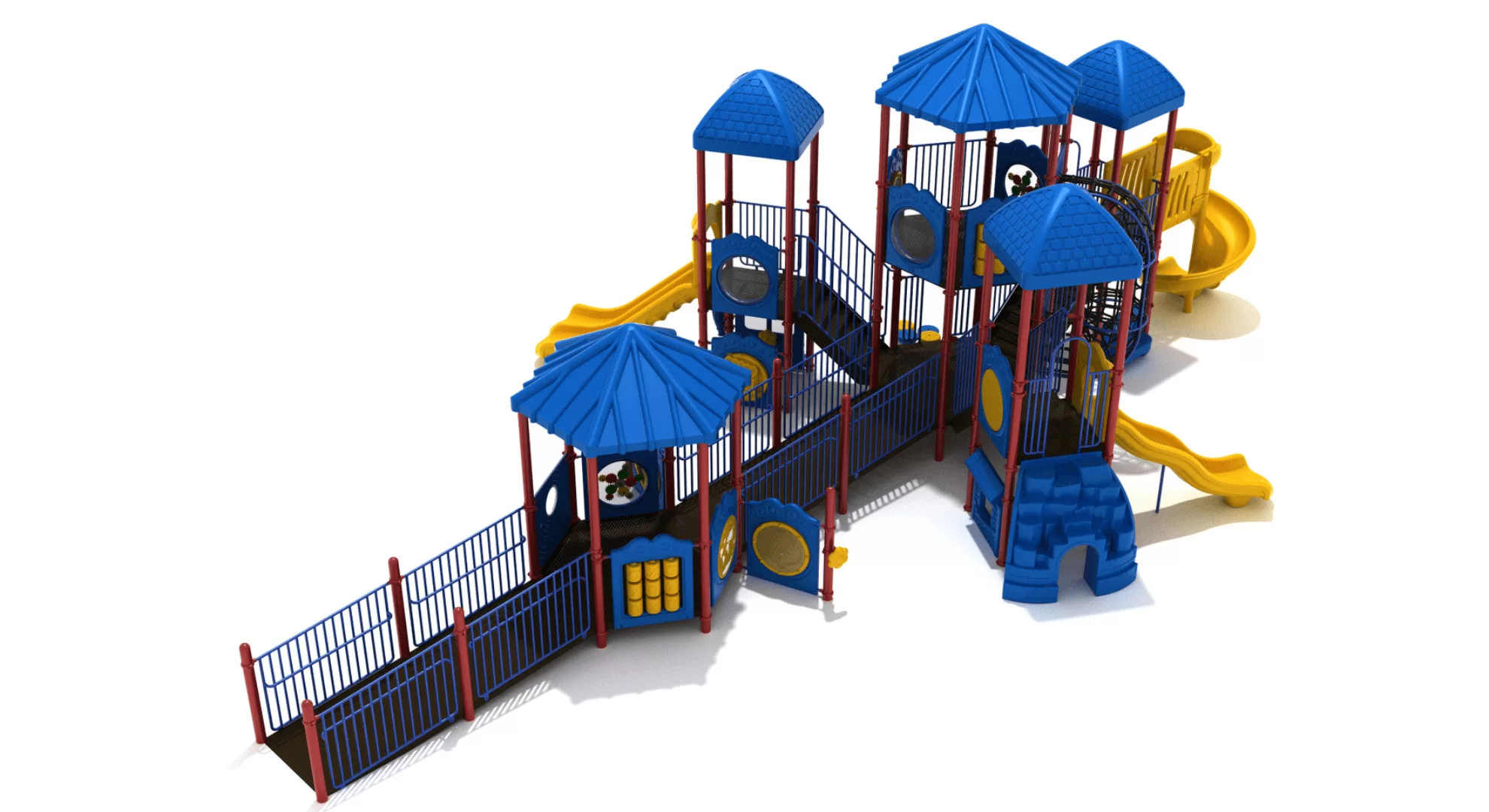

√ Promotes Social Skills Through Shared Play
Equipment like wheelchair-accessible ramps lets kids of all abilities play together, fostering friendships and empathy.
√ Supports Physical Development for All Abilities
Inclusive preschool playground equipment (low-height climbers, sensory panels) builds motor skills safely for toddlers and children with disabilities.
√ Enhances Cognitive and Sensory Learning
Examples of inclusive play practice like sound gardens or textured paths spark creativity and problem-solving in early childhood.
√ Builds Confidence and Emotional Resilience
From indoor inclusive playground equipment to commercial outdoor setups, designs ensure no child is excluded-including adults with disabilities.
√ Strengthens Community Inclusion
Public spaces with best inclusive playground equipment become hubs for families, schools, and caregivers to connect.
√ Cost-Effective and Future-Proof Design
Durable modular designs reduce future costs while meeting safety standards like ADA.
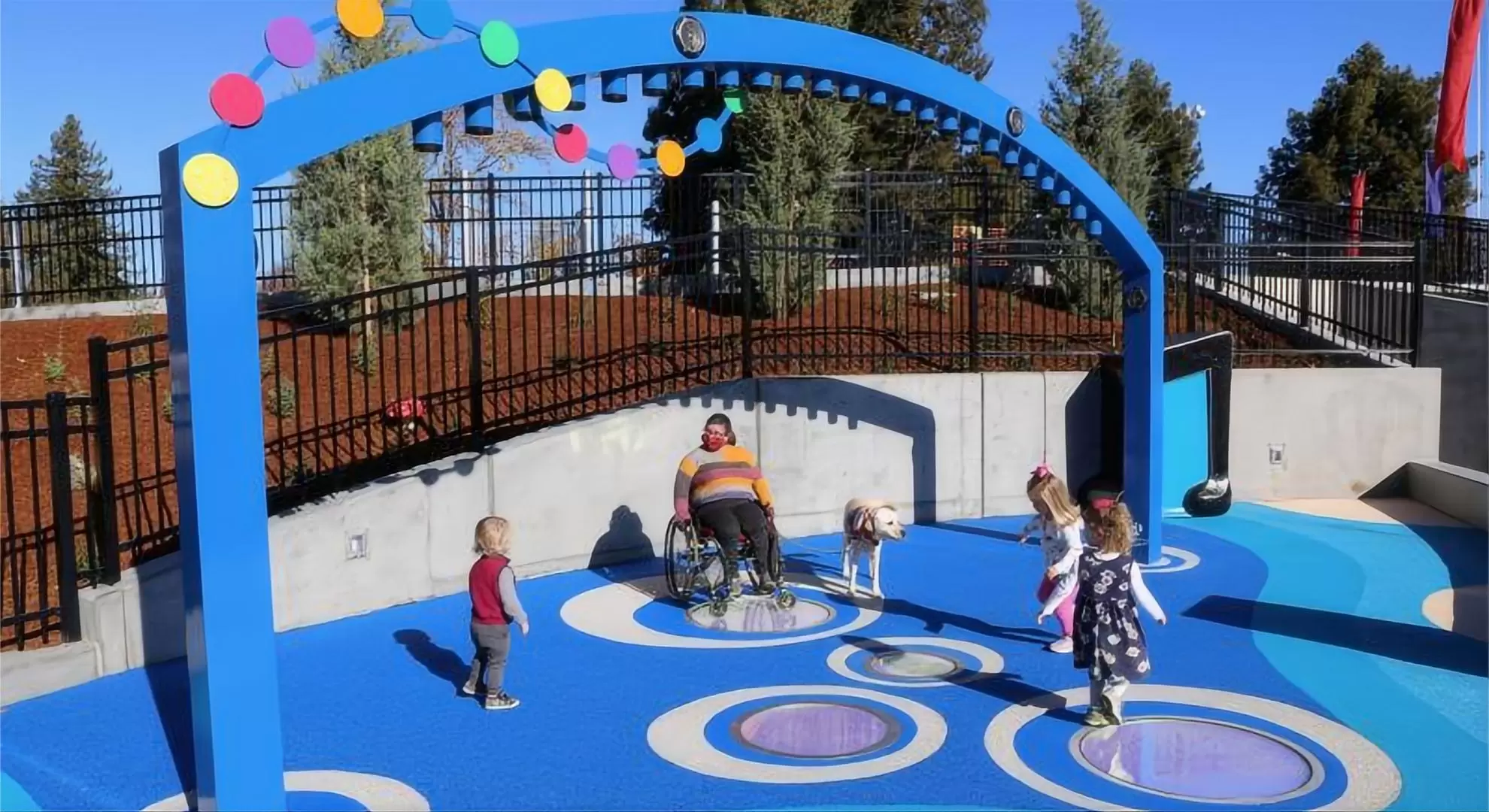
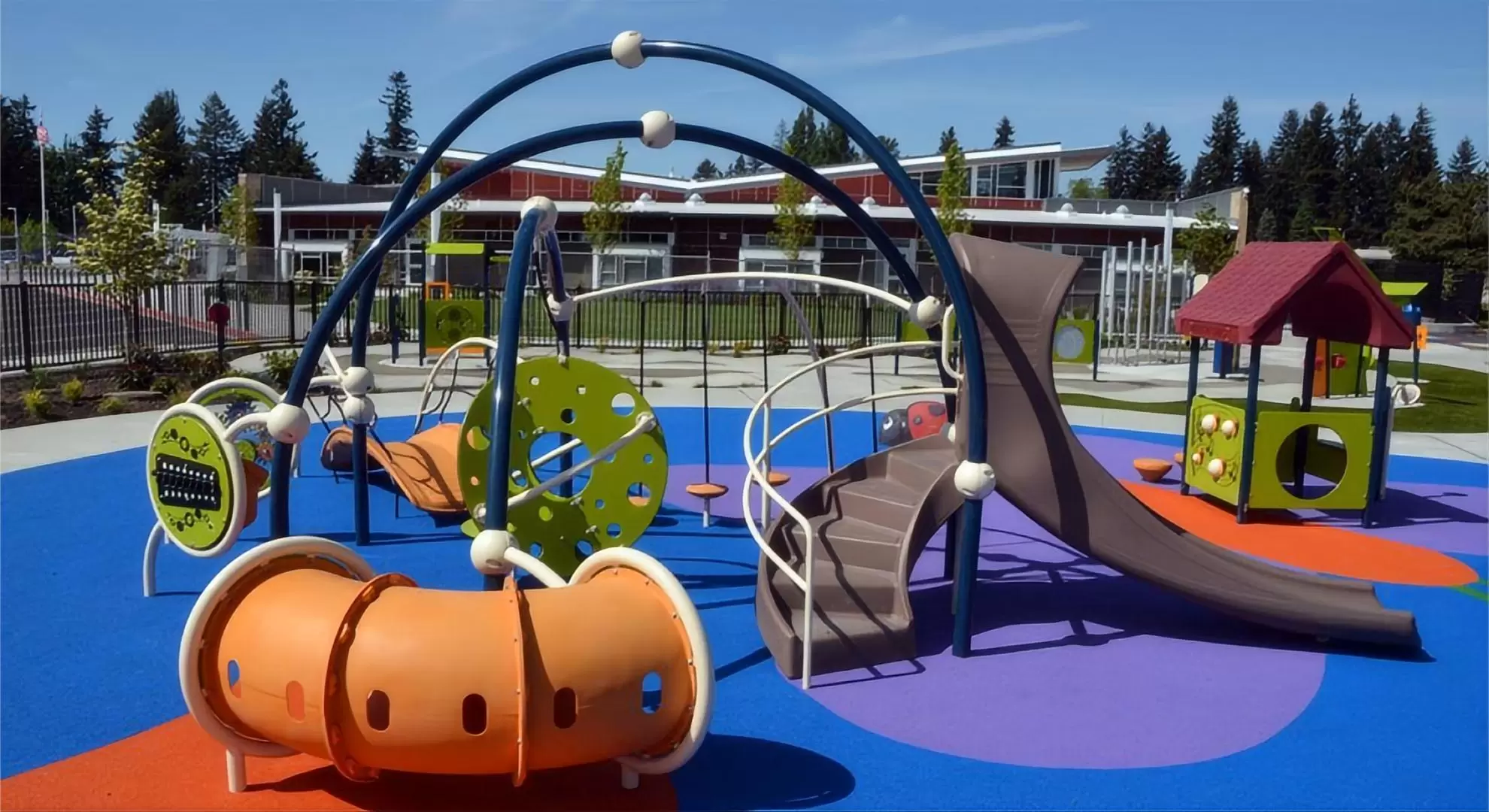
We believe inclusive play spaces thrive on collaboration. From initial design to final installation, we partner with schools, communities, and families to create environments that align with the inclusive playground definition – spaces where every child, regardless of ability, feels valued and empowered.
How We Partner with You?
√ Co-Design with Purpose
Leverage our expertise in examples of inclusive play practice to tailor layouts, such as sensory pathways or interactive storytelling corners, that reflect your community’s unique needs.
√ Preschool-Focused Solutions
Integrate inclusive activities for preschoolers into play zones with equipment like low-height climbing structures and cooperative music panels, designed to spark early social and motor development.
√ Transparent Process
From cost of inclusive playground equipment breakdowns to 3D renderings, we keep you informed at every step.
We design playgrounds where every child thrives. By blending creativity, accessibility, and purposeful challenges, our spaces empower kids of all abilities to explore, connect, and grow—together. Rooted in collaboration with experts and families, these principles ensure play isn’t just fun but transformative.
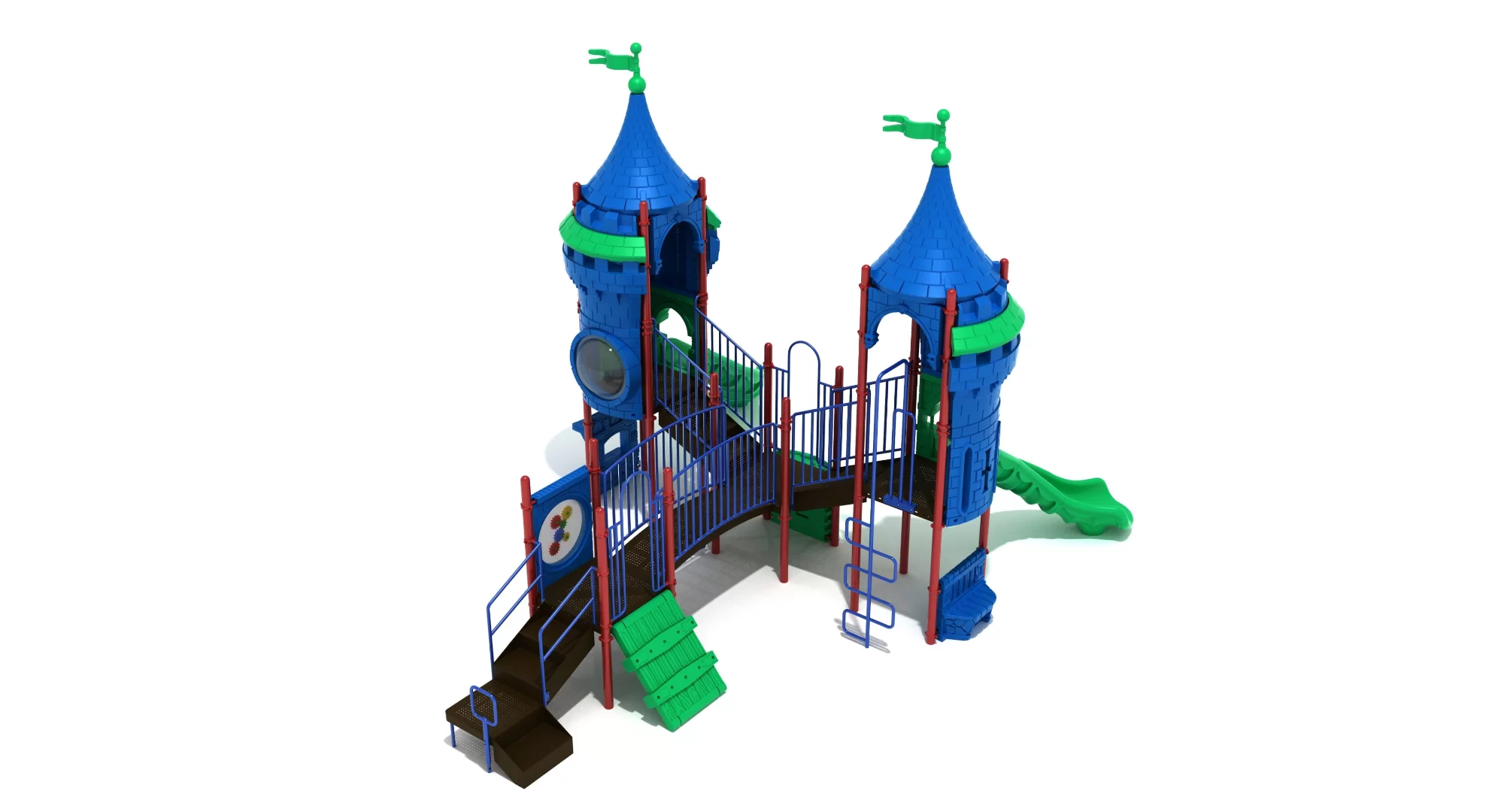
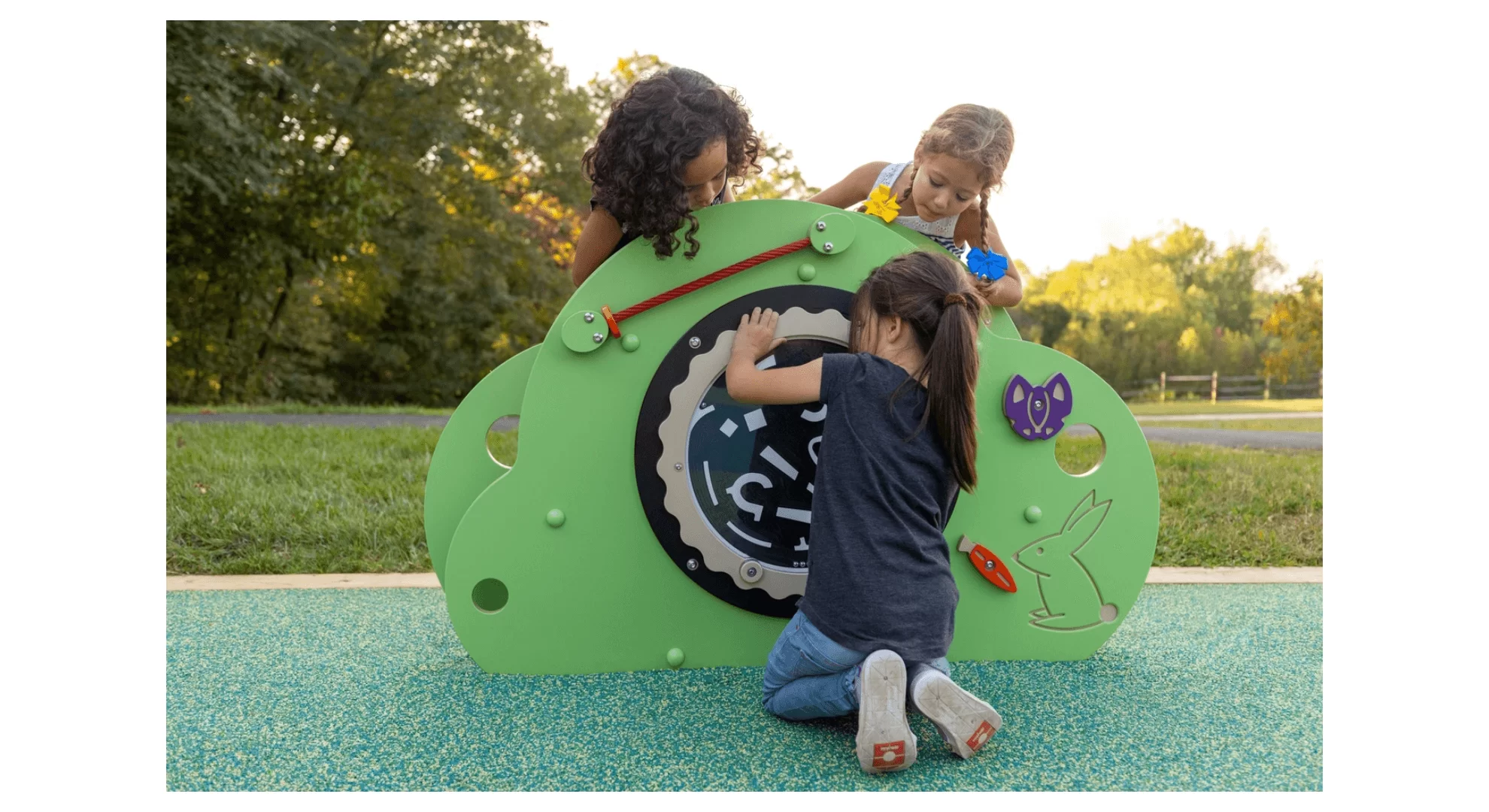
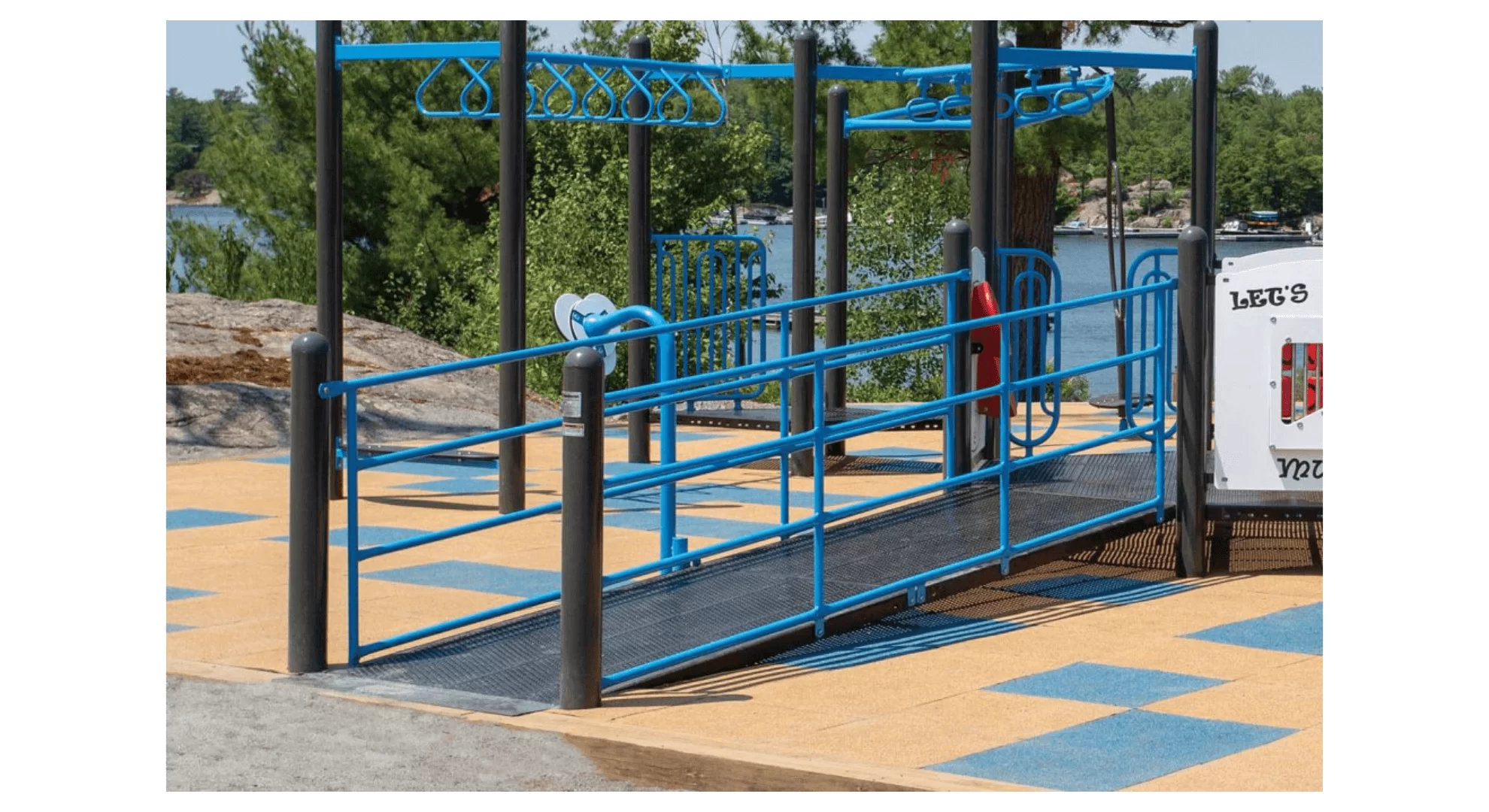
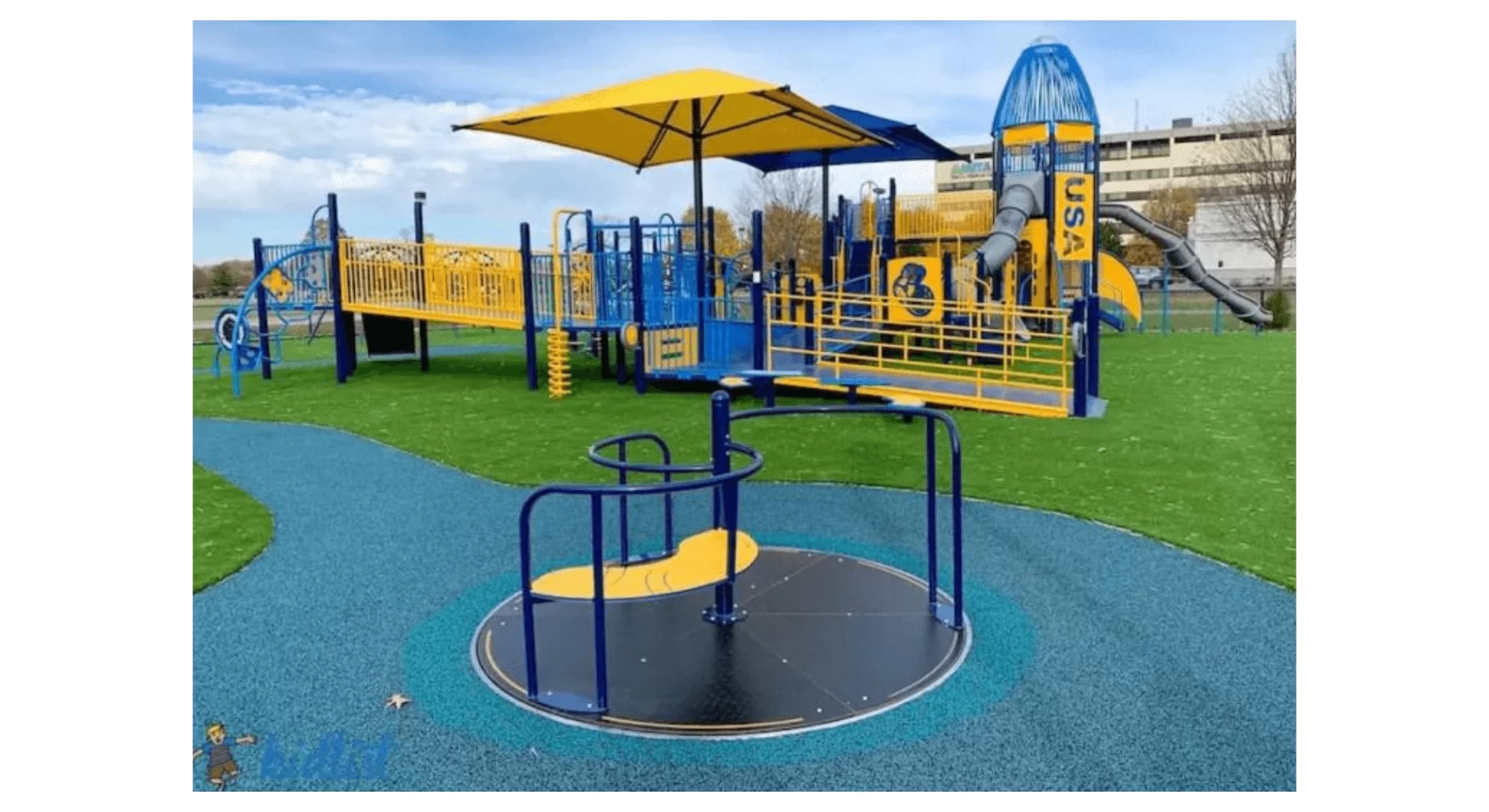
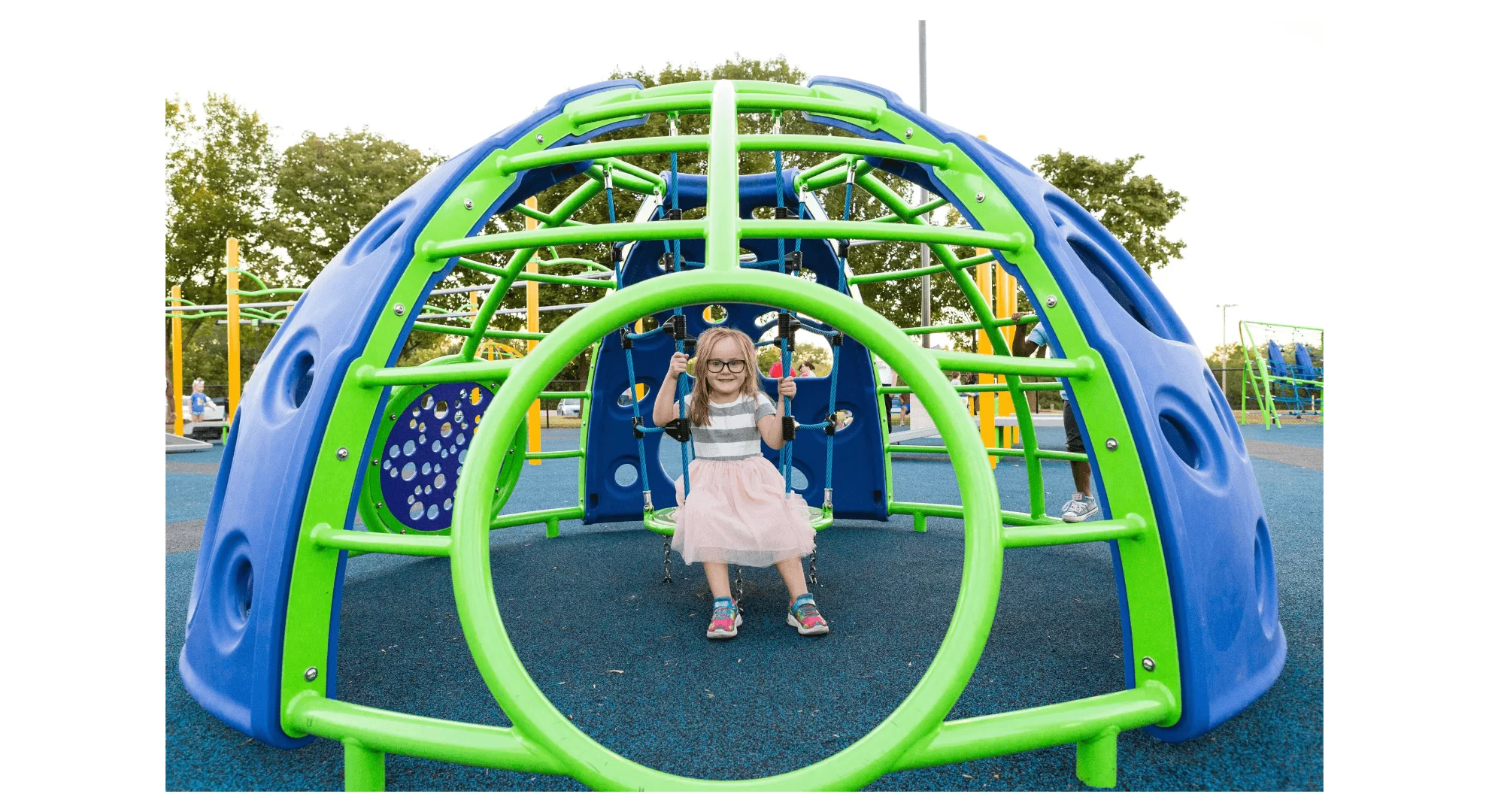


FAQs
An inclusive playground is a play space designed to be accessible and engaging for children of all abilities, including those with physical, sensory, or cognitive disabilities. It removes barriers by using ramps instead of stairs, smooth rubber surfacing for wheelchairs, and equipment like sensory panels or wheelchair-accessible swings. For example, Morgan’s Wonderland in Texas offers waterproof wheelchairs for water play and braille panels, ensuring every child can participate fully. These spaces prioritize safety, social interaction, and independence.
Key equipment includes wheelchair-accessible merry-go-rounds with safety locks, height-adjustable sensory tables for sand/water play, and adaptive swings like the Expression Swing (with harnesses and back support). Sensory tools like musical panels, tactile walls, and quiet zones cater to children with autism. Ground-level features like ramp-accessible slides and transfer platforms allow seamless transitions from wheelchairs to play structures. Cooperative elements, such as dual-width slides or seesaws requiring teamwork, encourage interaction between children of all abilities.
Inclusive playgrounds serve children aged 2–12 but are designed for multi-generational use. Toddlers enjoy low-profile crawl tunnels and bucket swings, while older kids use climbing nets with adaptive handholds or zip lines with supportive seats. Design strategies like scalable difficulty levels (e.g., adjustable climbing angles) let children of different abilities explore safely. Quiet zones with shaded seating also accommodate caregivers, making the space welcoming for families.
Over 7 million U.S. children have disabilities, yet fewer than 10% of playgrounds meet accessibility standards. Inclusive equipment ensures these children develop physically and socially—spinner bowls build core strength, while interactive storyboards aid language skills. It also fosters empathy: studies show kids in inclusive spaces are 72% more likely to engage with peers with disabilities. Legally, ADA compliance reduces litigation risks (fines up to $75,000 for violations).
Inclusive playgrounds boost community engagement, increasing park visits by 30–50%. They use durable materials like rubber surfacing (lasting 15–20 years), cutting long-term costs. Schools report fewer bullying incidents and better classroom cooperation. Organizations can also qualify for grants, such as UNICEF’s Child-Friendly Cities funding. It’s a strategic investment in social equity and community well-being.
Follow ADA Standards Chapter 10.6: ensure 60-inch-wide pathways, slopes ≤1:16, and ramps or transfer stations for 50% of elevated structures. Use poured rubber surfacing (ASTM F1951 compliant) and install interactive panels 15–48 inches high. Include 30×48-inch clearance zones for wheelchairs.
Traditional playgrounds cost 50–120/sq.ft. (wood chips, basic equipment). Inclusive designs range 120–250/sq.ft., driven by rubber surfacing (12–18/sq.ft.) and custom equipment like adaptive swings (4,000–8,000). Grants like KaBOOM!’s Inclusive Play Fund can offset 30–50% of costs. Brooklyn Bridge Park’s $2.1M inclusive playground used municipal grants to cover 60% of expenses.
Weekly, check for cracks in rubber surfacing (repair if >1/8 inch wide) and corrosion on metal parts. Clean sensory panels with pH-neutral solutions. Annually, pressure-wash surfaces (under 1,200 PSI) and audit safety with Certified Playground Inspectors. Modular systems allow part replacements without full dismantling, saving time and costs.
Yes. Start with cost-effective upgrades: replace wood chips with rubber tiles (15/sq.ft.), add transfer platforms (3,000 each) near slides, and install inclusive swings or sensory panels. Many communities qualify for retrofit grants—NRPA’s Parks Build Community program is a key resource. Retrofitting can improve accessibility by 60–80% at half the cost of rebuilding.
Verify certifications like IPEMA (North America) or EN 1176 (Europe). Test if equipment offers multiple play methods (touch, sound, movement) and includes caregiver spaces (e.g., wheelchair zones near swings). Truly inclusive designs will align with standards beyond ADA, such as ASTM F1487 for safety.
Thank you very much for your inquiry! Your trust is our greatest motivation. We are committed to offering playgrounds that combine high quality with affordable pricing. Let us bring vitality to your venue!